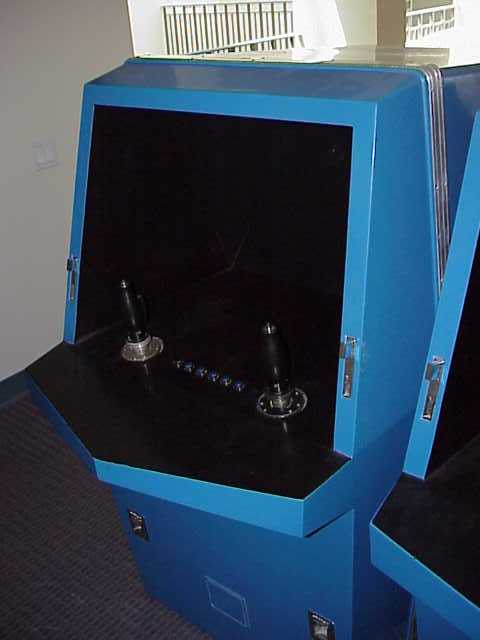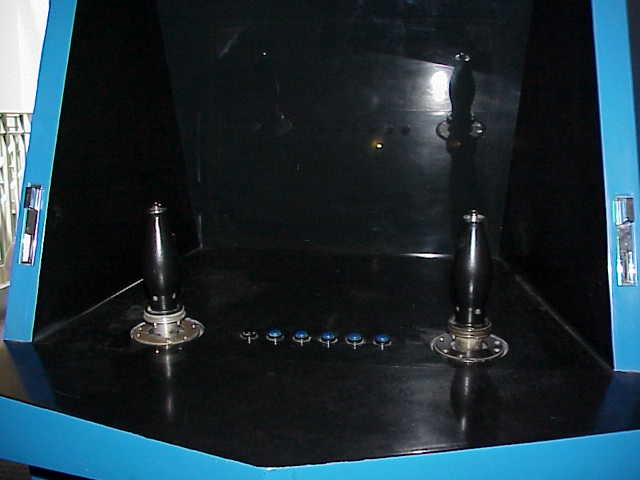David Gries' Compiler book Source.
( Prior Exhibit: The Galaxy-Game machine )
floor5
David Gries' Compiler Construction book, source on cards
 | Cabinet |
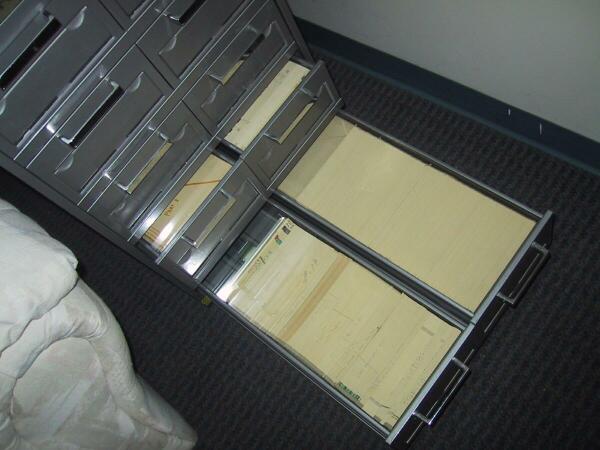 | Card Drawers |
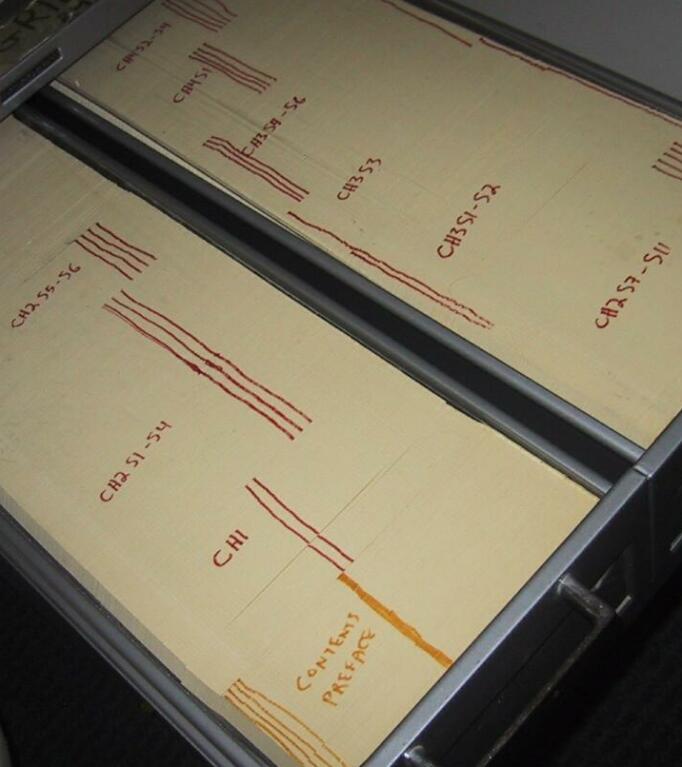 | SampleContent |
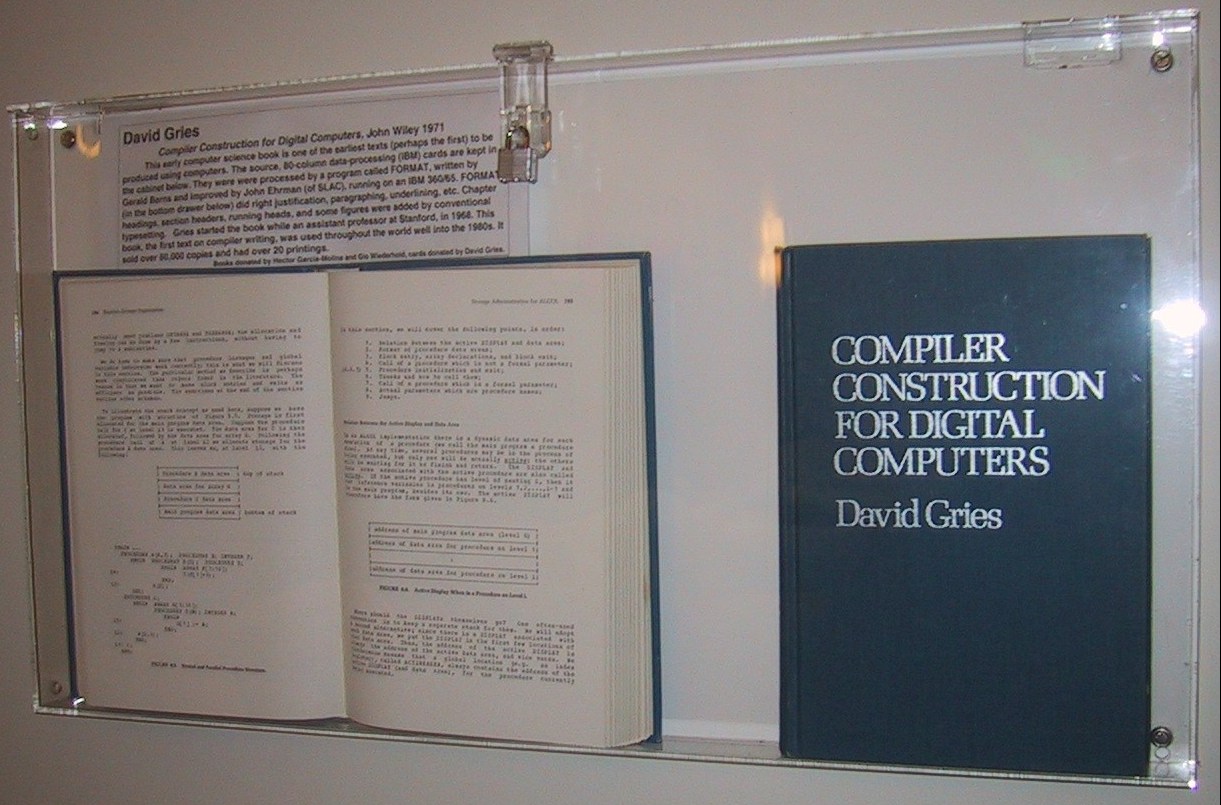 |
>Compiler Construction for Digital Computers, John Wiley 1971
This early computer science book is one of the earliest textbooks to be
produced using computers. The source, 80-column
data-processing (IBM) cards are kept in the cabinet shown, as is the
associated formatting program. |
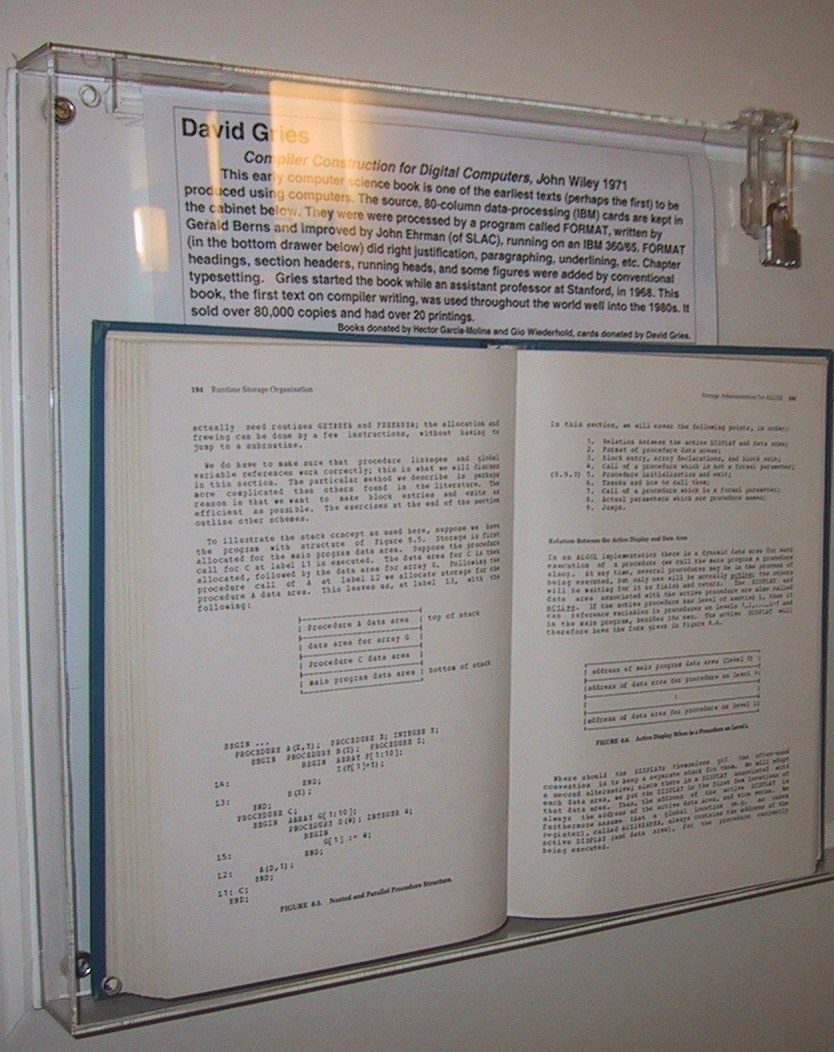 |
Source of Compiler Construction Textbook [Gries].
"Compiler Construction for Digital Computers"; Wiley publishers, 1971.
[Books donated by Hector Garcia-Molina and Gio]
This early computer science book is one of the earliest texts (perhaps
the first) to be produced using computers.
This book, the first text on compiler writing, was used throughout
the world well into the 1980s. It sold over 80,000 copies and had over
20 printings.
Professor David Gries started the
book while an assistant professor at Stanford, in 1968.
The text for the book was punched onto ~12 000 computer
data-processing (IBM)
cards, now kept in the cabinet displayed here.
Many of the figure were also created by using characters and
avoiding justification.
Each card has 80
columns with 12 rows. On each card 72 columns were used for 72
characters of text. The other 8 columns were used for identification,
so you could arrange the cards again if you dropped them.
The text was processed by a program called FORMAT, written by Gerald Berns and
improved by John Ehrman (of SLAC), running on Stanford's
IBM 360/65 Computer. The FORMAT program (stored in the bottom
drawers of the cabinet) did right justification, paragraphing,
underlining, etc. of text. The FORMAT program is also stored here in its
original card form.
The book was printed on one of the earliest printers that could print
lower-case as well as upper-case letters. Chapter headings, section
headers, running heads, and some figures were added by conventional
typesetting.
Galaxy-Game, removed to CMH
Galaxy-Game machine [Pitts] (1971), Galaxy Game controls,
GalaxyGalaxy-Game Sign
This Galaxy game might have been the first commercial game machine.
It was built and installed at the Stanford Tresidder student union in
1971 by Bill Pitts and Hugh Tuck.
A single PDP-11 was used to drive the two vector displays, each allowing 2
players to compete.
It has now been moved to the Computer History Museum in
Mountain View.
(More
Galaxy Information).
We have also a
picture of the predecessor game
at SAIL, running on the PDP-6 and the I3 display.
More
Information about the Galaxy games
Back to Stanford
Exhibits main page







